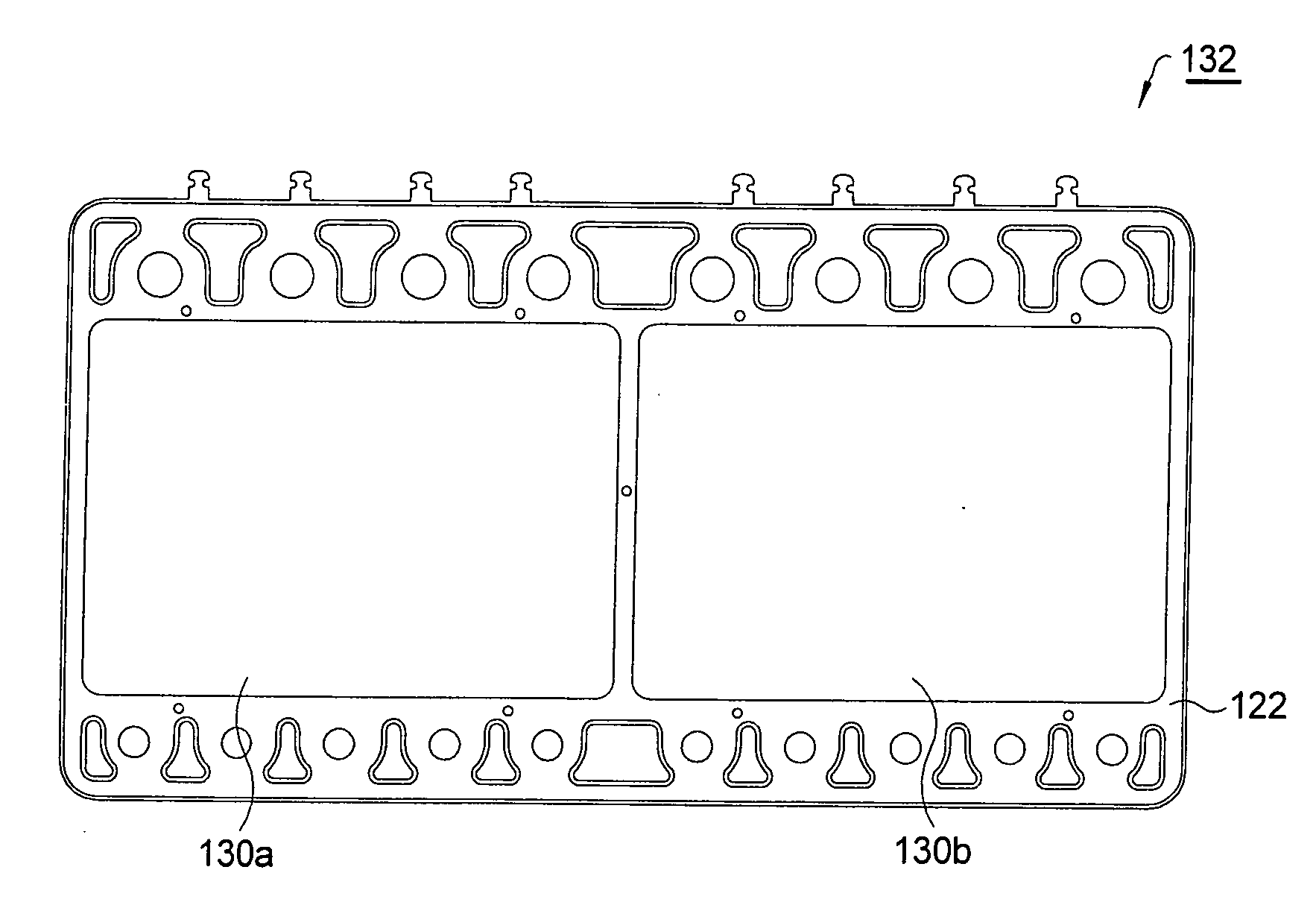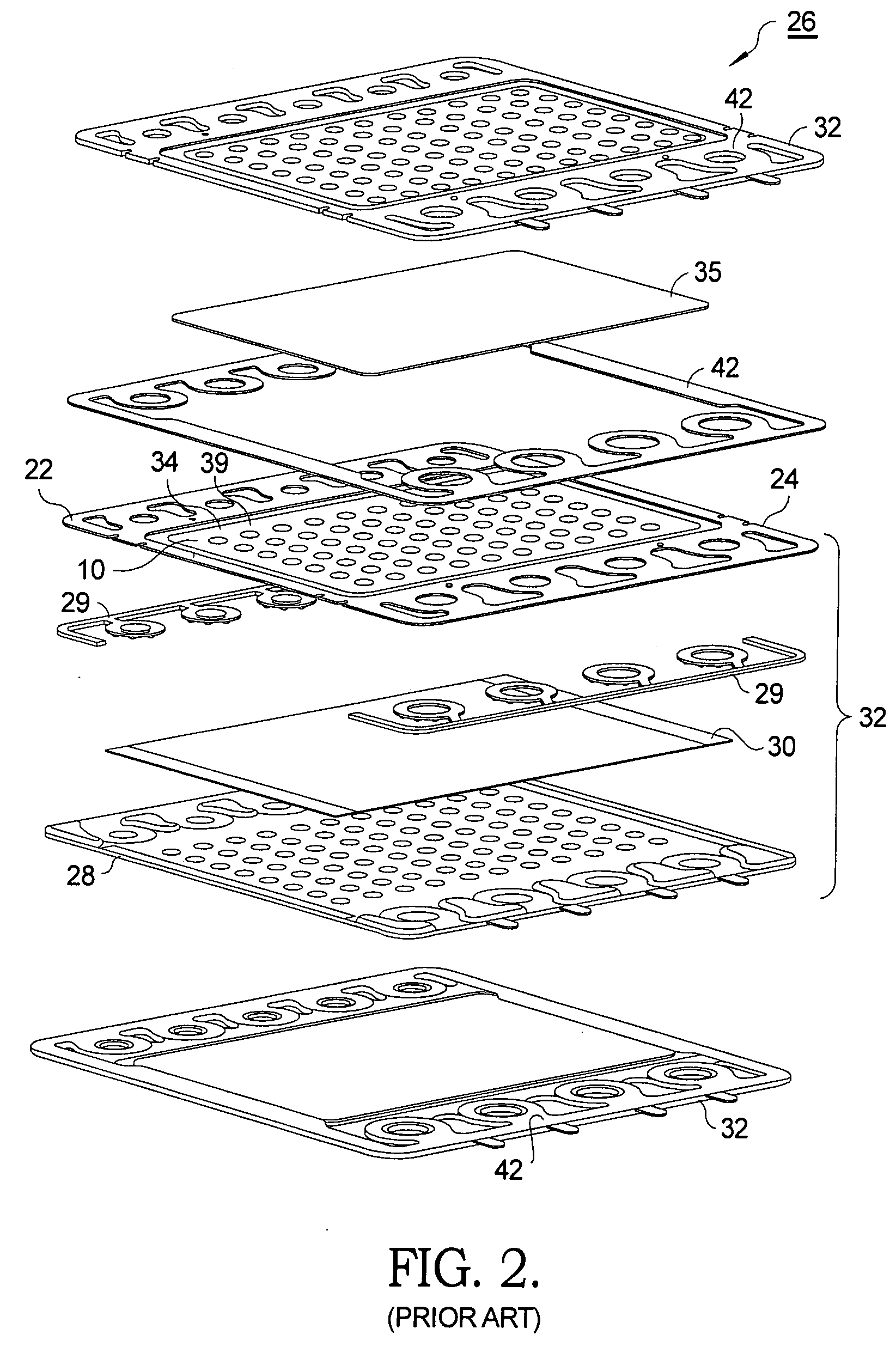Fuel cell stack having multiple parallel fuel cells
a fuel cell and stack technology, applied in the field of fuel cell stacks, can solve the problems of increasing the proportion of system volume required for manifolding of inlet and return gases, increasing the cost and size of the cell per unit area of electric generating capacity, and increasing the resistance losses at the cell-to-cell junction
- Summary
- Abstract
- Description
- Claims
- Application Information
AI Technical Summary
Benefits of technology
Problems solved by technology
Method used
Image
Examples
Embodiment Construction
[0024]Referring to FIGS. 1 and 2, an exemplary prior art SOFC fuel cell module 10 comprises a cathode layer 12, an electrolyte layer 14 formed of a solid oxide and bonded to the cathode layer 12, and an anode layer 16 bonded to the electrolyte layer 14 on a side opposite from the cathode layer. Air 18 is passed over the surface 34 of the cathode layer 12, and oxygen from the air migrates through the electrolyte layer 14 and reacts in the anode layer 16 with hydrogen anode gas 20 being passed over the anode surface 31 to form water, thereby creating an electrical potential between the anode and the cathode of about 1 volt. Each individual fuel cell module 10 is mounted, for handling, protection, and assembly into a stack, within a metal frame 22 referred to in the art as a “picture frame”, to form a “cell-picture frame assembly”24.
[0025]To facilitate formation of a prior art stack 26 of individual fuel cells connected in series wherein the voltage formed is a function of the number o...
PUM
| Property | Measurement | Unit |
|---|---|---|
| operating voltages | aaaaa | aaaaa |
| electrical potential | aaaaa | aaaaa |
| voltage | aaaaa | aaaaa |
Abstract
Description
Claims
Application Information
 Login to View More
Login to View More - R&D
- Intellectual Property
- Life Sciences
- Materials
- Tech Scout
- Unparalleled Data Quality
- Higher Quality Content
- 60% Fewer Hallucinations
Browse by: Latest US Patents, China's latest patents, Technical Efficacy Thesaurus, Application Domain, Technology Topic, Popular Technical Reports.
© 2025 PatSnap. All rights reserved.Legal|Privacy policy|Modern Slavery Act Transparency Statement|Sitemap|About US| Contact US: help@patsnap.com



